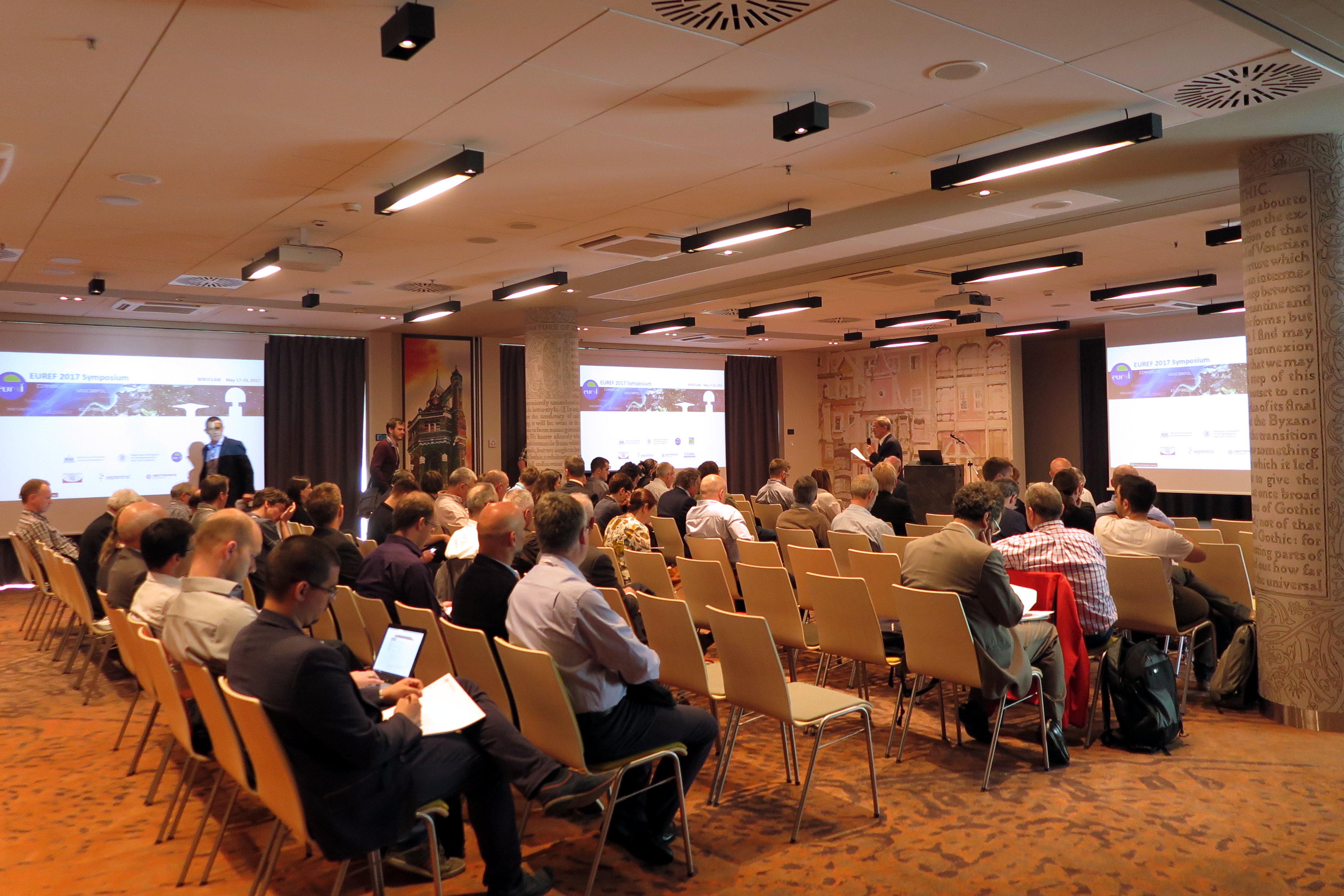Report of EUREF symposium 2017 in Wrocław, Poland
The 2017 EUREF Symposium was held in Wrocław, Poland, May 17 – 19. It was preceded by a half-day tutorial May, 16, on “Real-Time Infrastructure and Applications in Europe”. The number of participants in the Symposium was 106, and in the Tutorial 52. The local organizer was the Institute of Geodesy and Geoinformatics of Wroclaw University of Environmental and Life Sciences.
The scope of the symposium covered different aspects of the definition, realization and maintenance of the European Reference Frame, with five sessions on:
- Systems: ETRS89, EVRS (Conveners: Zuheir Altamimi and Markku Poutanen);
- Networks: EPN, UELN, Densification (Conveners: Elmar Brockmann and Ambrus Kenyeres);
- Techniques: GNSS, Levelling, Combination (Conveners: Rolf Dach and Martina Sacher);
- Applications: Earth Sciences, Geo-information (Conveners: Alessandro Caporali and Rosa Pacione); and
- National Reports (Conveners: Jan Krynski and Guenter Stangl).
A total of 35 oral presentations and 18 posters were given in the Symposium. Reflecting the large number of poster presentations, a poster introduction session was included in the first day’s programme. Additionally, a 1-hour discussion forum was organised on the ETRF2014 related topic.
One of the major themes in the Symposium was the Future of Reference Frames. A questionnaire was sent to all European countries in March 2017, the main goal being to find out needs and opinions on the new ETRS89 realization in Europe, ETRF2014. The questionnaire was induced by the resolution no. 3 of 2016 Symposium. Based on the results of the questionnaire, a presentation was given, there was the discussion forum with a very lively and active participation, and further, a resolution was accepted on the topic. The main outcome of the questionnaire was that there are different needs in countries, different practices and a lot of variable opinions; as well there exist also practical restrictions to adopt a new reference frame in the near future. This fact is reflected in the 2017 resolution no. 1 where the currently recommended realisation ETRF2000 is retained as well.
Another future reference frame related item was dynamic (kinematic) reference frame and its impact on European reference frames. As an example, the project of the Nordic Geodetic Commission was introduced, with goal to study possibilities and conditions to establish a dynamic reference frame in Iceland. New reference frame approach will be topical in coming years and subject of next Symposia.
Discussion on crustal deformation and deformation models, methods and applications led to the establishment of a new working group on dense velocity fields. Additionally, the development and performance of the EUREF Permanent GNSS Network (EPN) was presented, as well relations to EPOS (European Plate Observing System), gravity related heights, and environmental effects of GNSS signals. As usual, the presentations will be uploaded on the EUREF web page. This year, there will be the opportunity of peer-reviewed publication of presentations in a special issue in Geodesy and Cartography.
Also, as a result of 2016 Symposium resolutions, the Terms of References (ToR) were renewed and the new ToR were accepted. Mostly there were only updates of existing ToR, with changes in membership definition and voting. Earlier, Nations were divided into two categories, A (IAG member Nations) and B (others). This division was removed, and all European countries participating the work of EUREF are equal. Clarification of voting in the Plenary was given, as well tasks of the National representatives as the contact points between EUREF and Nations. The name of the Technical Working Group was changed to Governing Board to better reflect its tasks and position.
Many thanks to the Wrocław University of Environmental and Life Sciences, namely the Institute of Geodesy and Geoinformatics, and especially to the Local Organizing Committee, chaired by Jan Kaplan, for their excellent work to organize the Symposium.
Report compiled by Markku Poutanen and Wolfgang Söhne

| DOCUMENTS |
| EUREF 2017 Resolutions - Paper.pdf |